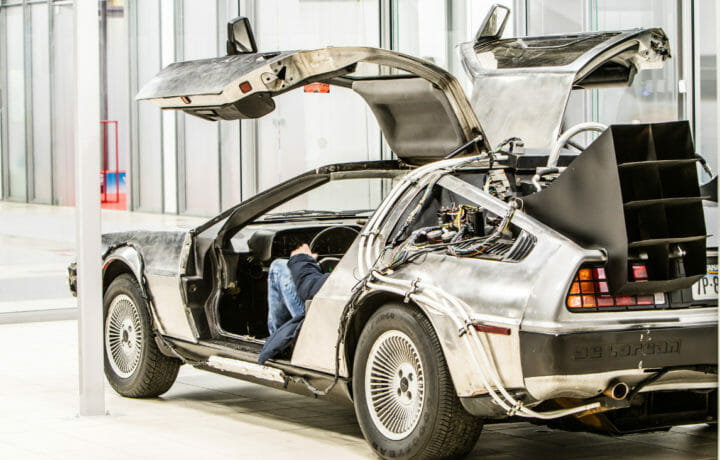This month, AFWERX, the United States Air Force program that works to foster a culture of innovation within the service, unveiled its latest efforts at an Accelerate event and this included a series of milestones for its “flying car” platform. The Air Force’s Agility Prime team announced that it had completed the airworthiness evaluation report for its Joby S4 design for the Technical Airworthiness Authority.
With this input to the U.S. Air Force Special Airworthiness Process for the Contractor-Owned Contractor-Operated Aircraft (COCO), the Joby aircraft is on track to fly under an Air Force contract early next year.
The project also received positive support from the Federal Aviation Administration (FAA).
“We at the FAA are very privileged to partner with the Air Force and AFWERX on Agility Prime,” added Steve Dickson, FAA administrator. “We see tremendous value in this program for civil aviation applications. The accomplishments under Agility Prime have been very impressive so far. Already it has awarded millions of dollars of contracts and established an (Air Force) airworthiness process for electric vertical takeoff and landing ORBs.”
Flying High
The recent test flights of the Joby S4, an electric vertical take-off and landing (eVTOL) aircraft prototype design, helped ensure that the aircraft prototype was awarded its first airworthiness approval by the Air Force.
“Our partnership with AFWERX and the Air Force has been transformative,” said Joby Aviation CEO JoeBen Bevirt, via a statement.
Bevirt added that the Agility Prime program provided the company with access to facilities, resources and equipment that accelerated testing and allowed the company to prove out the reliability and performance of its aircraft.
Mission Friendly
The recent flights also provided an opportunity to assess the utility of the aircraft platform in a variety of missions including distributed logistics, medical evacuation, firefighting, disaster response, search and rescue, and humanitarian-relief operations. Moreover, such flight tests could generate data to support the FAA certification enabling a broader commercial market.
“You are literally seeing a new market emerge,” explained Dr. William Roper, assistant secretary of the Air Force for acquisition, technology and logistics. “This is exactly the type of public private partnership innovation the Air Force and Space Force want to be a part of…to make amazing things happen not just for the military but for the world.”
The Air Force has announced plans to field the ORBs – the small eVTOL aircraft that are agile, runway and airport independent and cost-effective – in 2023.
“For the Air Force, specifically Air Mobility Command, Agility Prime has the potential to bring next generation agility to movement, delivery, sustainment and air medical evacuation to the battlespace,” said Gen. Jacqueline Van Ovost, commander of Air Mobility Command. “But Agility Prime also has direct applications across the civilian sector: humanitarian aid and disaster response, aerial medical supply delivery, search and rescue, and wildfire suppression.”
The AI Co-Pilot
In addition to efforts to develop a flying car, the Air Force has also been conducting tests to employ artificial intelligence (AI) as part of a working aircrew member aboard a military aircraft. On Dec. 15, an AI algorithm, known as ARTUµ, was used in a test flight but not on the latest generation of aircraft such as the Lockheed Martin F-35 Lightning II.
Rather the technology was used on an aircraft that first took flight when computers were the size of a small room and had far less computing power than the most basic smartphones. ARTUµ was used with another Lockheed design, the Cold War era U-2 Dragon Lady, a plan that had its first flight 65 years ago! The particular aircraft was assigned to the 9th Reconnaissance Wing at Beale Air Force Base (AFB), California.
Researchers at the Air Combat Command’s U-2 Federal Laboratory developed ARTUµ and “trained it” to execute specific in-flight tasks that otherwise would be done by the pilot. During this month’s test flight, which simulated a missile strike, ARTUµ assisted the pilot and was responsible for sensor employment and tactical navigation.
“ARTUµ’s groundbreaking flight culminates our three-year journey to becoming a digital force,” explained Dr. Roper. “Putting AI safely in command of a U.S. military system for the first time ushers in a new age of human-machine teaming and algorithmic competition. Failing to realize AI’s full potential will mean ceding decision advantage to our adversaries.”
Teaching AI
This was the Air Force’s latest efforts to leverage AI. In the test flight, the sensor control was positively handed-off to ARTUµ, which manipulated the sensor based on insight that it previously acquired from over a half-million computer simulated training iterations.
“We know that in order to fight and win in a future conflict with a peer adversary, we must have a decisive digital advantage,” said Air Force Chief of Staff Gen. Charles Q. Brown, Jr. “AI will play a critical role in achieving that edge, so I’m incredibly proud of what the team accomplished. We must accelerate change and that only happens when our Airmen push the limits of what we thought was possible.”
While the U-2 Federal Laboratory designed this AI technology, it can be easily transferable to other systems and the Air Force already has plans to further refine the technology for use in other aircraft. This month’s test flight further provided invaluable data for not only the team to learn from, but also ARTUµ the Air Force noted.
“Blending expertise of a pilot with capabilities of machine learning, this historic flight directly answers the National Defense Strategy’s call to invest in autonomous systems,” said Secretary of the Air Force Barbara Barrett. “Innovations in artificial intelligence will transform both the air and space domains.”




